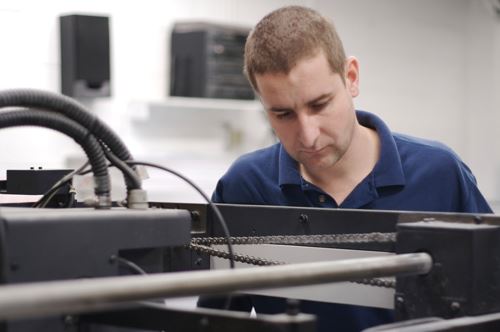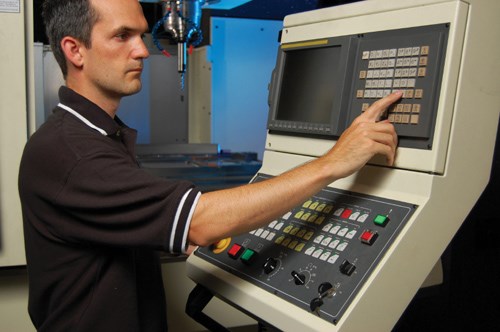Prepare for a New Economy with Three Critical Investments
It’s time for mold manufacturers to use the experience they’ve gained as craftsmen to develop new opportunities for their businesses.
Change isn’t always the most comfortable part about running a business. Sometimes it seems that just as we begin to figure it all out we’re faced with an entirely new set of challenges that force us to look at how we do things and completely reevaluate our priorities. But as uncomfortable as that change can be, it’s necessary.
As customer demands evolve and market opportunities shift from one place to another, businesses must be willing to reinvent themselves or risk losing out on emerging or hot markets, new opportunities, and even existing customers.
Many manufacturing sectors were hit extremely hard in 2009, and although manufacturing as a whole is predicted to be one of the areas of our economy making an early run at recovery this year, some sectors will remain down for a while. If your sweet spot happens to be mired in economic turmoil that doesn’t look to resolve itself anytime soon, it’s probably time to look at widening your sweet spot by considering a foray into other markets.
But in order to effectively enter any new market, it’s important that you’ve done your homework. You have to know if the market bears sufficient opportunity, if your skills translate well, and how to prepare your business for the transition. The first two can be done by analyzing market needs and requirements, and by evaluating whether or not your business can deliver. However, preparing for entry takes solid planning and a strong commitment to execution.
1. Invest in Your People
Before moving into a new market, ensure your team is prepared to handle the transition. They should fully understand the needs of the businesses that you will be serving, be able to evaluate the impact of their actions during each transaction, and be more than experts on product features and pricing.
Employee development is critical. Properly trained employees will churn out higher quality product at a faster and more consistent rate, resulting in tangible productivity and quality gains for your business. If you don’t already have a formal training program in place, now would be a great time to invest in one. If your training program is already well-organized, it’s time to think about how you can improve it.
Ensuring your team is properly trained on all shop equipment is essential, but you shouldn’t stop at technical training. You’d be best served with a more holistic approach to employee training that also incorporates soft business skills like customer service and relationship management. Take the time to help your employees understand how their role impacts the customer with courses and content that focus on developing customer-facing business skills that can help your employees get inside the head of the customer.
By helping your employees develop and refine these customer-facing skills, you will help them feel more comfortable during everyday customer interactions, ultimately sending the message to your customer that you understand them and you care about them.
2. Deploy Technology that Supports Your Processes
From a production perspective, it’s well-known that job shop software is capable of helping your business become more
productive, organized and accurate, but it can also help you utilize and apply customer-facing skills. By now, most shops have been forced to update the technology in the shop in order to remain competitive from a production and quality standpoint. However, technology is also valuable for managing and facilitating the processes needed to keep your business operating at peak efficiency.
ERP software has helped companies add structure to their business processes, making them controllable and consistently repeatable. Integrated ERP systems also help businesses keep track of their important business information, making it possible for them to analyze groups of customer transactions that can lead to useful insights about customer behavior, more accurate forecasts, and more accurate planning for material purchases and work center capacity.
Spreadsheets and disparate systems that simply don’t talk to one another are no longer a practical solution. Shops that have invested in technology that helps them run their business as well as shop technology that helps them build better products are working from a position of greater strength despite the weak economic conditions. Because they’ve already made the investment in ERP software many of these businesses are poised to be able to make the move into other markets.
For example, the automotive market for tools and dies may never return to the glory days of the ‘80s and ‘90s, but many of the systems and processes these companies have in place are very transferrable to other markets. Fortunately, systems that support electronic quality and lot and serial tracking provide the business with the infrastructure it needs to make the move into medical devices.
3. Leadership Attitude
Any change requires a commitment from leadership. You can have all the right people in place with exactly the right sy-stem, but unless the highest levels of the organization recognize the value of being market and customer driven, failure is imminent.
You know what you’re good at. Today, it might be designing and building molds for the automotive industry. But if you’re smart, tomorrow you could be starting a new component for a laser scalpel. The new economy is going to demand that moldmakers, and other small manufacturers, rethink their position in the manufacturing industry. You don’t have to think like the big boys, but you do need to understand what makes the big boys successful and then adapt those ideas to the way that you do business.
Summary
Take time to look at your core competencies and see where else they might be a fit. Use the experience you’ve gained from being a craftsman to create new opportunities for your business. You may find yourself even more successful than you imagined.
Read Next
Reasons to Use Fiber Lasers for Mold Cleaning
Fiber lasers offer a simplicity, speed, control and portability, minimizing mold cleaning risks.
Read MoreHow to Use Continuing Education to Remain Competitive in Moldmaking
Continued training helps moldmakers make tooling decisions and properly use the latest cutting tool to efficiently machine high-quality molds.
Read MoreAre You a Moldmaker Considering 3D Printing? Consider the 3D Printing Workshop at NPE2024
Presentations will cover 3D printing for mold tooling, material innovation, product development, bridge production and full-scale, high-volume additive manufacturing.
Read More

















_300x250 4.png;maxWidth=300;quality=90)
.jpg;maxWidth=300;quality=90)




_970x250 1.png;maxWidth=970;quality=90)